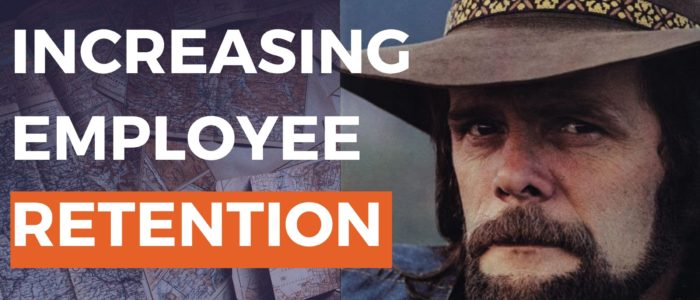Employee Retention Strategies – A Comprehensive Guide
I Get Asked On The Regular About Employee Retention Strategies.
Employee retention is something many organizations struggle with.
That said, the struggle also exists with the employee as well.
For the organization, there’s frustration of employees leaving for greener pastures.
I’ve seen organizations not bother with their employee onboarding experience as a result. I’ve written about the employee onboarding experience here, and here as well.
Instead, they hire them, keep them for a year or two, get the most out of them, and run them off. (People are pushed out via burnout and overwork). Then they hire someone else.
Larger organizations can get away with this (especially the FAANG organizations). If you’re a small organization, this could be a recipe for disaster.
For the employee, it’s not like they want to be job hopping on the regular. Unless it involves a major pay raise. There are reasons that have been lead to lower retention rates:
- Generational differences that differ from their parents. Working 1 or 2 places in your career has died off.
- Different economic times. More organizations are quicker than laying off staff. More employees are willing to jump ship if they see any red flags.
- Work environments that don’t mesh with them. There’s a difference between toughing something out, and working in a place run by psychopaths who think more work is the answer (It usually isn’t).

How Long Should Employees Stay?
Let’s look at the two major approaches that occur:
- Staying at one job for the whole of your career. These are people spending 20+ years at an organization. Common for the baby boomer generation.
- Staying at a job for anywhere from 12-24 months. This is a somewhat concerning trend, especially in the tech space. Organizations love to blame “those pesky millennials”, but is that the case?
My Thoughts On Employee Retention?
Organizations should aim for longer periods of time than 12-24 months. That said, they shouldn’t be aiming to keep people longer than 20+ years, unless in very certain situations.
A good length I feel for employee retention would fall in the range of 4-10 years.
It depends on the organization, the role, and the individual. This 4-10 year period is a good range that avoids the pitfalls that occur of having turnover within 12-24 months. It also avoids the pitfalls that arise with having people stay 20+ years.
Let’s Take A Look At These Two Approaches Towards Employee Retention, With Their Benefits And Drawbacks.
1. The Lifelong Employee.
Again, as mentioned, this has been dying out in most fields, and is a relic of the baby boomer generation. But, there were some benefits, along with drawbacks that exist in this approach.
The Benefits Of The Lifelong Employee
- Levels of expertise: If you’ve been at an organization for 20+ years, you know the ins and outs. You’re that subject matter expert.
- Moving up the chain: You’re given the ability to move up to new roles, and new responsibilities, as you’ve had time to understand the inner workings.
- Security: Knowing that they’re getting that paycheck on the regular can allow for a level of comfort.
What About The Drawbacks Of The Lifelong Employee?
- Complacency. It’s human nature for it to happen. It will vary by the individual. But it can become common where people do the bare minimum to get by. It’s more likely to occur compared to organizations with lower employee retention.
- Brain drain: What happens when those people retire? How do you ensure that the knowledge gets kept?
No, you can’t just dissect their brain. Sorry.
2. The Low Retention Employee.
As mentioned, this has become much more common and the norm, especially since the 2008 recession.
What Are The Benefits Of The 12-24 Month Employee?
- If they’re not the right fit for your organization, they’re not going to be staying that long anyways. They won’t be in that long.
- There isn’t an issue of being complacent. They’re not at your organization that long, so you don’t have to worry about that.
What About The Cons Of The 12-24 Month Employee?
- The morale drain. To see employees being in and out will take a toll on employee morale.
- It takes usually up to a year for an employee to be proficient. By that point, they’re pretty much out the door anyways.
- Brain drain. Yes it’s different compared to someone with 20 years, but these things go out the door on the regular.
- The overlooked costs of employee turnover. To replace someone, and get them up to speed takes quite a bit of money, and time. (further reading here on the subject of turnover costs).

Strategies To Increase Employee Retention.
By focusing on increasing employee retention, you’re going to take a different look at how you invest in your employees.
Instead of doing the “hire them straight out of University, burn them out, and then replace them with new grads”, approach (so common in the large tech organizations like FAANG, or where organizations that thrive on overwork) you start to take a very different outlook and approach to how you invest into your employee experience.
In a post I wrote about the employee onboarding experience, I wrote about how investing in the employee onboarding experience is taking a long-term investment approach. That is the approach I want your organization to take.
Build A Strong Employee Onboarding Experience For Better Employee Retention.
One of the best ways to help increase employee retention is developing a strong employee onboarding experience. One that will allow employees to hit the ground running from day one.
How you decide to do your onboarding is up to you. Regardless, your main goals for your employee onboarding experience should be the following:
- From day one, new employees know they’ve made the right choice in joining your organization.
- They’re able to hit the ground running from day one.
- They know that their work matters.
- They’re given everything they need to know, but were afraid to ask.
- They’re not overwhelmed from day one.
How you reach there is up to you, although if you’re looking for more information, I have the following blog posts:
Giving Them Room For Growth.
One common reason I see people leaving organizations is“lack of growth”.
Why does this occur?
If most people are out the door within 12-24 months, they’re not given much time to grow, take on new responsibilities, and move up in the organization.
If you’re focusing on longer retention, you can build plans where employees can take on different and more responsibilities. You give them the chance to move up the chain in the organization.
For further reading, check out the following articles I’ve wrote on the subject:
- The Untapped Power Of The Stay Interview
- Why And How To Create A Proper Talent Management Strategy
- 3 Way To Optimize Performance Management In Your Org
Creating An Employee Journey Map.
You want to build out a concrete plan of what an employee’s experience will look like in the organization. You can start to really build out a solid plan of what their experience should be like, and the “moment’s that matter”.
One of the best ways to do so is to sit down and craft out what that journey looks like, or an employee journey map. Journey maps are common for using with users and customers, but with a few adjustments, the process can be turned inward and used on the employee experience.
I’ve written on the subject in depth which you can read about here.

Focus On Making Employees Your Greatest Investment.
“Making Employees Your Greatest Investment” is a common saying at Playficient. I’m in the firm belief that if you take this approach, the chance of survival and thriving of your organization greatly increases.
I’ve written in the past in length about taking this approach, which you can read about here.
Conclusion And Next Steps In Increasing Employee Retention.
My goal of this post was to get you thinking about your employee retention, and what you can do to increase it. If gears are starting to turn in your mind, I’ve done my job.
I want you to think about what you can do next in your journey of increasing employee retention. Even taking the smallest step forward will give you an edge in comparison to other organizations.
Too many organizations (especially ones that are growing, especially in tech) don’t give this much thought. Instead, they burn out their employees (mostly focusing on new university grads), and replace them. This has killed many organizations that we never got to hear about.

Maybe they had a great product that the market had a need for, but were undone by struggling to keep quality employees, as they had the constant employee churn.
If only they spent a little bit of time to recognize the issue that this creates long-term, and sat down to draw out a plan to create long-term investments into employee retention and the employee experience, it’s likely they could’ve avoided that situation.
Sadly, most growing organizations look at the template created by the large tech organizations, with high turnover, and try to replicate the same. The Googles and Amazons can get away with it because they have more money than most countries, and for every person that leaves, they have who knows how many people lined up to sell their soul and firstborn for a chance to work there.

By asking these questions, and questioning the norm that is occurring in the modern workplace, you can build out an advantage that, despite being common sense, is overlooked in the world that loves to thrive and pride itself on overwork.
I hope you enjoyed this post, and all the best with increasing employee retention.


